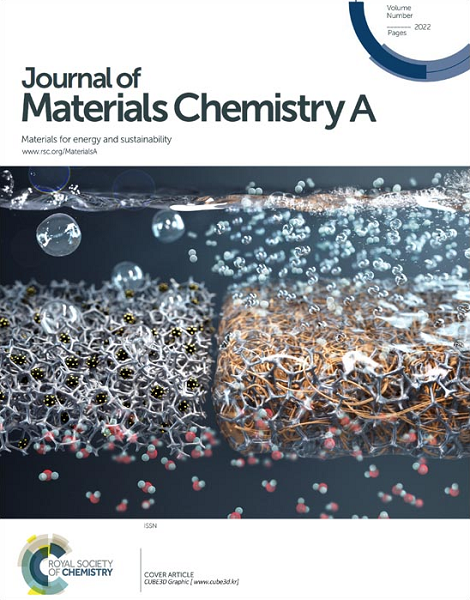Controlled Crystal Orientation and Reduced Lattice Distortion with Cystamine Dihydrochloride Spacer for Efficient and Stable 2D/3D Perovskite Solar Cells
IF 10.7
2区 材料科学
Q1 CHEMISTRY, PHYSICAL
引用次数: 0
Abstract
Long-chain organic spacer diamine molecules are pivotal in the development of mixed two-dimensional (2D) and three-dimensional (3D) perovskites, as they integrate the enhanced stability of 2D perovskites with exceptional efficiency of 3D perovskites. Despite their potential, research on incorporating Dion-Jacobson (DJ) 2D components into the two-step fabrication process for 2D/3D perovskites and the effect of organic spacer diamine molecules on crystal orientation and lattice distortion remains insufficient. Here, a novel organic spacer diamine molecule, cystamine dihydrochloride (CysCl), has been introduced to construct DJ 2D/3D perovskites. The resulting DJ 2D perovskite enables the development of high-quality perovskite films with improved crystal alignment, reduced lattice distortion, alleviated residual stress, and enhanced carrier transport. Consequently, the DJ 2D/3D device achieves an impressive efficiency of 24.54%, outperforming the control 3D perovskite device (22.72%). Notably, the non-encapsulated device retains 86% of its original efficiency after 1400 hours of continuous exposure to AM 1.5G light under ambient air conditions (25±5 °C, 50±5% relative humidity). Additionally, it demonstrates negligible degradation after 675 hours under combined thermal and light stress, meeting the ISOS-L-2 standard.求助全文
约1分钟内获得全文
求助全文
来源期刊

Journal of Materials Chemistry A
CHEMISTRY, PHYSICAL-ENERGY & FUELS
CiteScore
19.50
自引率
5.00%
发文量
1892
审稿时长
1.5 months
期刊介绍:
The Journal of Materials Chemistry A, B & C covers a wide range of high-quality studies in the field of materials chemistry, with each section focusing on specific applications of the materials studied. Journal of Materials Chemistry A emphasizes applications in energy and sustainability, including topics such as artificial photosynthesis, batteries, and fuel cells. Journal of Materials Chemistry B focuses on applications in biology and medicine, while Journal of Materials Chemistry C covers applications in optical, magnetic, and electronic devices. Example topic areas within the scope of Journal of Materials Chemistry A include catalysis, green/sustainable materials, sensors, and water treatment, among others.
 求助内容:
求助内容: 应助结果提醒方式:
应助结果提醒方式:


